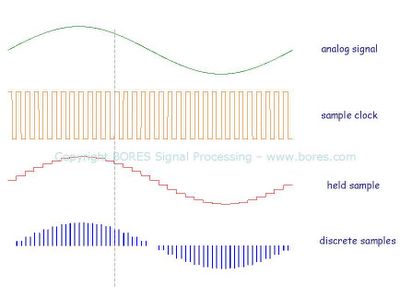Sample and hold operations

I am struck by how the term 'sample-and-hold' puts the two operations back-to-front.
There are two steps to the conversion of an analog signal to digital form. The two are often confused, and the term "analog-to-digital conversion" is often (mistakenly) used to refer to both steps in the process. This confusion can hide important engineering choices.
The idea of analog-to-digital conversion is to take a continually varying analog signal and convert that to a discrete set of samples taken (usually) at some regular time interval. The conversion is in fact a form of measurement, and for each sample will produce just one measured value. The problem here is, that the signal is continuously varying and so the (single) measurement will be some kind of average of the variation. Worse, the process of conversion to digital form can take some time and be done in stages - for example the method of "successive approximation" makes a first guess at the value, which it then refines step by step - and if the signal is changing during this measurement process then some very strange results could be had. In general it is a bad idea to make a static measurement of a changing variable: we get around this either by having a measurement device that is so fast that the signal is in effect static; or by "holding" the signal to some static value before we make the measurement. This process of "holding" the signal is an important first step.
Only after it has been held can the signal be measured, and the measurement converted to a digital value. The hold operation must be fast compared to the rate at which the signal is varying: but the conversion process has more time - it can take place during the entire time that the signal is held (which will usually be most of the interval between samples). In engineering terms this means that there is a stringent requirement on he hold circuit - it must be very fast compared to the rate of change of the signal - but a lesser requirement on the converter circuit (it must complete during the inter-sample interval). This means that we can sometimes use a slower Analogue to Digital Converter (ADC) than might seem required at first sight. The conversion takes the value of the (held) signal and convert that to a digital number representation. The sampling results in a discrete set of digital numbers that represent measurements of the signal - usually taken at equal intervals of time.
Comments
Post a Comment